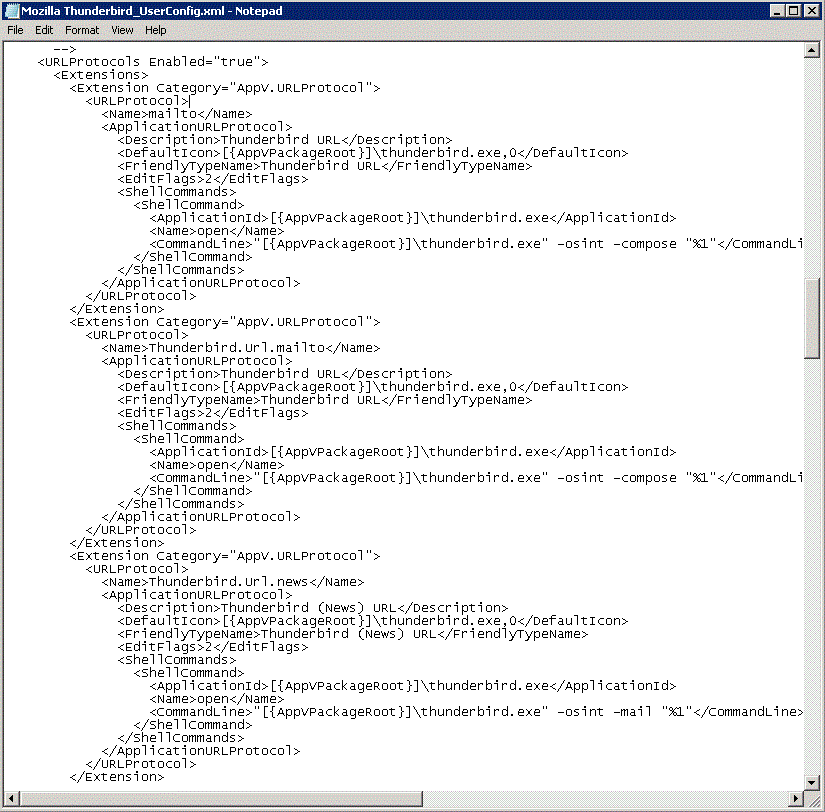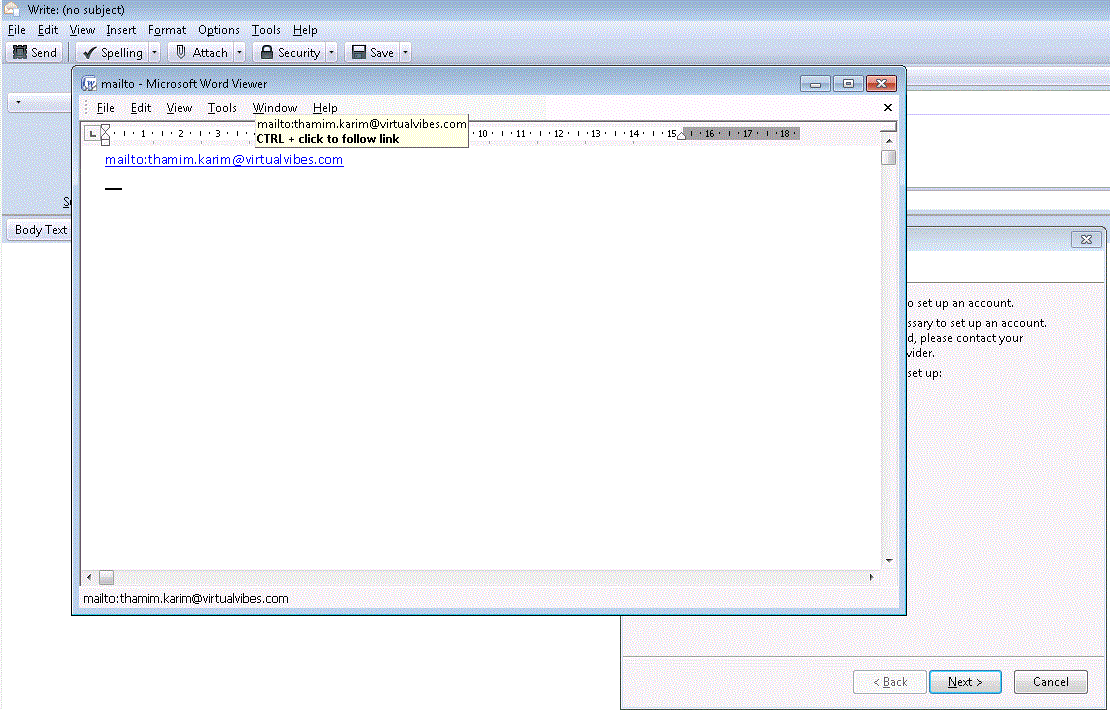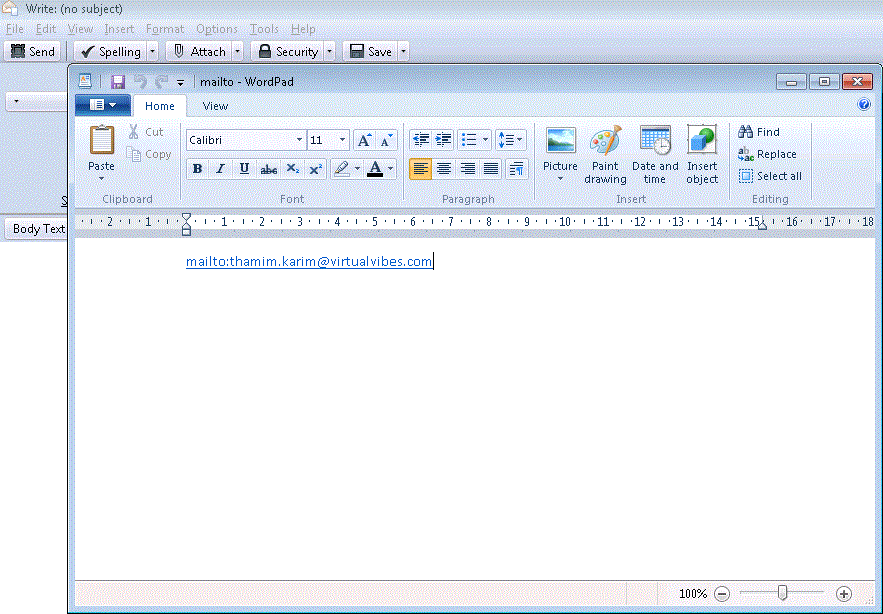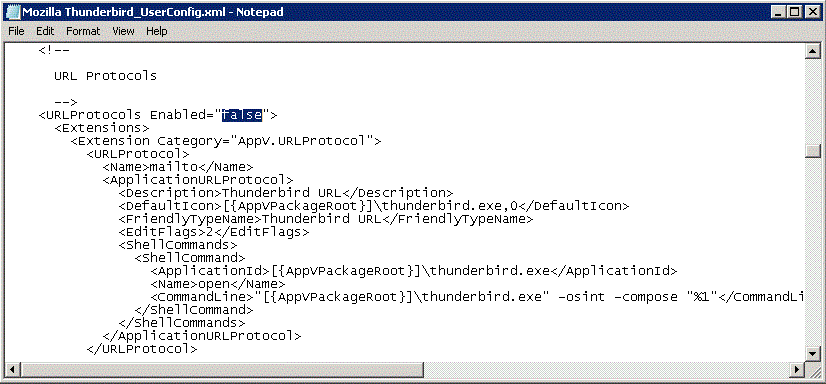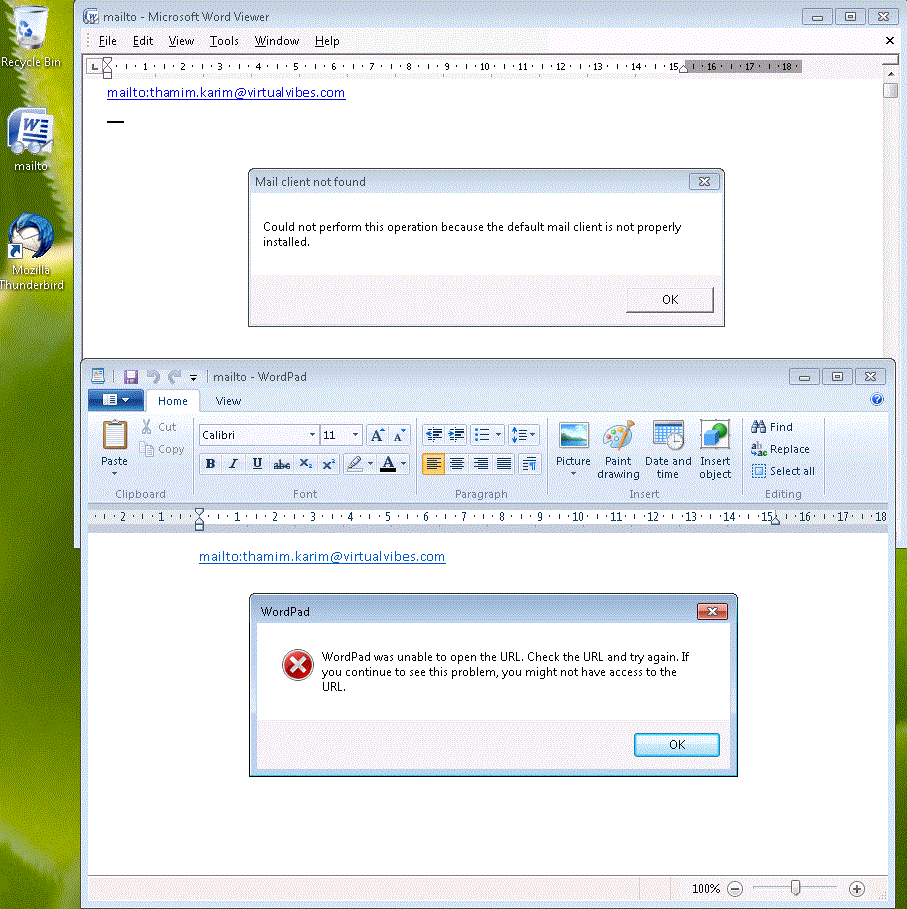Introducing Virtual Application Extensions in App-V 5.0
Hi Everyone!
So you may have heard rumours about App-V 5.0 applications being able to have less isolation and more entry points to the base OS. Well, that’s true, it’s all because of a new feature called Virtual Application Extensions.
This new feature allows you to be very intentional around certain Microsoft Windows components that you would like your application to be able to interact with. Depending on your application and the environment you are deploying it to you may want to enable or disable certain extensions, varying the level of isolation. The great thing about these extensions are that not only are they virtual-to-virtual but because they are registered natively on the Windows platform they are also native-to-virtual.
Here are some examples of the types of things we can have extensions for:
- Shortcuts
- File Type Associations (FTAs)
- AppPaths
- URL Protocols
- Software Clients
- Set Program Access and Computer Defaults (SPAD)
- COM Local Servers
So how do we use Virtual Application Extensions?
Well in App-V 5.0 we have two Dynamic Configuration XML files, one of which is read at the time of importing a package and affects all users, the other can be used at the time of publishing a package to target settings at a group of users. Stay tuned as I will be posting more about these XML files soon!
The good news is the sequencer does the hard work for you and automatically detects extensions and registers them in the XML files mentioned above. It is up to you to change, add or remove as you please.
Let’s take a look at the following example with virtualised Mozilla Thunderbird (mail client), virtualised Word Viewer and locally installed WordPad. In 4.x App-V a “mailto” handler in an application would not be able to natively call a virtualised mail client such as Mozilla Thunderbird. This is because Mozilla Thunderbird would not register this functionality on the base OS. In App-V 5.0 the sequencer picks up this feature and automatically adds the extension into our Dynamic Configuration XML files as shown:
This means, out the box, the mailto URL protocol will be registered natively for this package and clicking on a mailto link inside virtualised Word Viewer will invoke Mozilla Thunderbird:
Not only that but clicking on a mailto link in a locally installed application such as WordPad will also launch the mail client:
So imagine we didn’t want Mozilla Thunderbird taking over the mailto protocol handler how would we change it? Easy! Simply change the extension to false in the Dynamic Configuration file:
Once we publish using the amended settings neither virtualised Word Viewer nor locally installed WordPad can find a mail client to handle the mailto link:
Thamim Karim - VirtualVibes
Comments
Anonymous
January 01, 2003
Hi Thamim, Is there anyway to set a virtualized Word app to open when you click on a link from IE but only for a particular website? I've just found your blog after I posted a question on the App-V forum and this your article looks promising, but my scenario is a little bit different. social.technet.microsoft.com/.../ac4636d6-55f6-4a28-b19b-83f6105a6b51Anonymous
January 01, 2003
Thanks Caio!Anonymous
January 01, 2003
Hi Parvez, after reading your post I would have to agree with the response from Aaron Parker. If the website is using template FTAs to call Word, you could potentially deliver them for the 2007 package and leave them out of the 2010Anonymous
January 01, 2003
Great Article Thamim!Anonymous
January 01, 2003
Thanks Thamim. I'm going to try that out soon.
